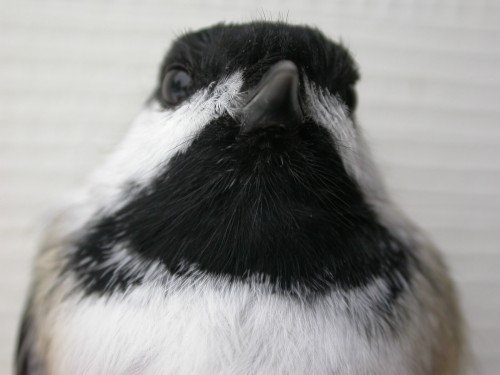Bander-in-charge:
Marcel Gahbauer
Assistants: Shawn Craik, Gay Gruner, Juliana Lisi, Greg Rand,
Limoilou-Amélie Renaud
Notes: It
was a rather uneventful week for winter by any standards, and seemed
particularly quiet in comparison to last week. A single morning of
banding produced just 4 new birds, by far the lowest total for any day
this winter. Even recaptures were relatively few. Many
others in the region have been reporting that activity at feeders has
been greatly reduced over the past week during the unseasonably mild
weather, and it may be that our observations simply mirror this more
widespread pattern.
Fortunately, the slower
pace gave as un opportunity to look at the Black-capped Chickadees in
considerable detail. At present, their sex can be determined only
during the breeding season, and ageing criteria are less obvious than in
many other passerines. However, various hypotheses have been
presented suggesting that wing chord, tail length, bib size and shape,
and mouth lining (among other features) may individually or in
combination be reliable indicators of age and/or sex. We will be
studying museum specimens in addition to the birds captured at MBO in an
attempt to determine whether any of these measures can be used
effectively.


